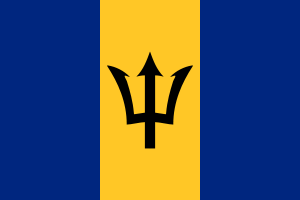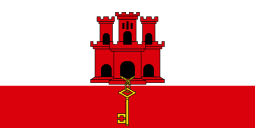Royal Anglian Regiment
| The Royal Anglian Regiment | |
|---|---|
 | |
| Active | September 1964- |
| Allegiance |
|
| Branch |
|
| Type | Line infantry |
| Role |
1st Battalion - Light Infantry 2nd Battalion - Light Infantry 3rd Battalion - Army Reserve |
| Size | Three battalions |
| Part of | Queen's Division |
| Garrison/HQ |
RHQ - Gibraltar Barracks, Bury St Edmunds 1st Battalion - Woolwich 2nd Battalion - Kendrew Barracks 3rd Battalion - Bury St Edmunds |
| Nickname(s) |
The Vikings (1st Battalion) The Poachers (2nd Battalion) The Steelbacks"(3rd Battalion) |
| Motto(s) | Stabilis |
| March |
Quick - Rule Britannia/Speed the Plough Slow - The Northamptonshire |
| Anniversaries |
1 August - Minden 1 September - Formation Day |
| Commanders | |
| Colonel in Chief | HRH The Duke of Gloucester, KG, GCVO |
| Colonel of the Regiment | Lt Gen Phil Jones CBE |
| Insignia | |
| Tactical Recognition Flashes |
|
| Arm Badge |
Salamanca Eagle From Essex Regiment |
| Abbreviation | R ANGLIAN |
The Royal Anglian Regiment (R ANGLIAN) is an infantry regiment of the British Army and is one of the four regiments of the Queen's Division. The regiment came into being following the amalgamation of various county regiments and thus can trace its lineage back to 1685. Soldiers and officers of the regiment have been involved in nearly every conflict in the modern era.
History
The regiment was formed on 1 September 1964 as the first of the new large infantry regiments, through the amalgamation of the four regiments of the East Anglian Brigade:[1]
- 1st (Norfolk and Suffolk) Battalion from the 1st Battalion of the 1st East Anglian Regiment
- 2nd (Duchess of Gloucester's Own Lincolnshire and Northamptonshire) Battalion - 1st Battalion, 2nd East Anglian Regiment
- 3rd (16th/44th Foot) Battalion - 1st Battalion, 3rd East Anglian Regiment
- 4th (Leicestershire) Battalion - 1st Battalion, Royal Leicestershire Regiment.
The Royal Anglian Regiment was established to serve as the county regiment for the following counties:
- Bedfordshire
- Cambridgeshire
- Essex
- Hertfordshire
- Leicestershire
- Lincolnshire
- Norfolk
- Northamptonshire
- Rutland
- Suffolk
Initially formed of seven battalions (four regular and three Territorial Army), the regiment was reduced in 1975 with the loss of the 4th (Leicestershire) Battalion to three regular battalions and three TA. The regiment was reduced again in 1992 to two regular and two TA battalions with the loss of the 3rd (16th/44th Foot) and 5th Battalions.[2]
In 1995, each battalion renamed its companies in order to perpetuate its lineage from the old county regiments:[3]
- 1st Battalion 'The Vikings'
- A (Royal Norfolk) Company (after the Royal Norfolk Regiment)
- B (Suffolk) Company (after the Suffolk Regiment)
- C (Essex) Company (after the Essex Regiment)
- D (Cambridgeshire) Company (after the Cambridgeshire Regiment)
- 2nd Battalion 'The Poachers'
- A (Royal Lincolnshire) Company
- B (Royal Leicestershire) Company
- C (Northamptonshire) Company
- D (Bedfordshire and Hertfordshire) Company
- 3rd Battalion 'The Steelbacks'
- A (Norfolk) Company
- B (Lincolnshire) Company
- C (Leicestershire & Northamptonshire) Company
- E (Essex & Hertfordshire) Company
- HQ (Suffolk & Cambridgeshire) Company
Deployments
The regiment carried out tours-of-duty throughout "the Troubles" in Northern Ireland and was present on 'Bloody Sunday' in Derry in 1972, when 14 unarmed civilians were killed.[4]
During the Yugoslav Wars, 2 R ANGLIAN was deployed to Bosnia in April 1994 as part of the United Nations peacekeeping force UNPROFOR.[5] During the tour, Corporal Andrew Rainey became one of the first ever non-officers to win the Military Cross, for his actions during a heavy contact between 3 Platoon, A Company and a Bosnian Serb Army unit on the confrontation line in the north of the Maglaj Finger.[6]
In 1995 the 1st Battalion was sent to Croatia as part of 24 Airmobile Brigade between July and October of that year.[7]
Shortly after British forces intervened in Sierra Leone during its civil war, the 2nd Battalion briefly joined the IMATT force in June 2000 to help train the Sierra Leonean armed forces.[8]
In March 2002, 1 R ANGLIAN was sent to Afghanistan, where it was based in the capital Kabul as part of the International Security Assistance Force (ISAF). The following February, 2 R ANGLIAN's A Company was posted to Kabul. They were replaced by C Company in June.[9]
In 2005 1 R ANGLIAN undertook tour in Iraq as part of Operation TELIC 6 where the battle group was responsible for the Basra Rural South area of operations. C (Essex) Company was detached to act as a Brigade Operations Company and was involved in several high-profile arrest operations.[10]
The remaining Territorial battalion of the regiment, the East of England Regiment was re-designated on 1 April 2006 as the 3rd Battalion, Royal Anglian Regiment as part of the reforms.[2]
In Spring 2006 2 R ANGLIAN deployed to Iraq as part of Op TELIC 8 and formed Basra City South Battlegroup. C (Northamptonshire) company was detached to operate as part of Force Reserve and was involved in many high-profile arrest and strike operations. During the tour the Regiment mourned the loss of two soldiers; on 13 May 2006 Private Joseva Lewaicei and Adam Morris died as a result of injuries sustained from a roadside bomb attack in Basra. A third soldier was badly injured.[11]
From March to September 2007, as part of 12th Mechanised Brigade, 1 R ANGLIAN was deployed to Afghanistan as part of Operation Herrick 6. This deployment was the subject of the Sky One documentary Ross Kemp in Afghanistan, broadcast in January/February 2008. A book has also been written by a former commanding officer about the battalion on this tour, Attack State Red, published by Penguin. They were stationed in Helmand Province. The fighting attracted much media attention due to the ferocity of the combat, with soldiers often having to resort to using bayonets. The battalion suffered nine casualties during its tour, five from attacks and four accidental.[12][13]
23 August 2007 friendly fire incident
In a reported friendly fire incident, on 23 August 2007, one of a pair United States Air Force F-15E fighter aircraft called in to support a patrol of the 1st Battalion in Afghanistan dropped a bomb on the same patrol, killing three men, and severely injured two others. It was later revealed that the British forward air controller who called in the strike had not been issued a noise-cancelling headset, and in the confusion and stress of the battle incorrectly confirmed one wrong digit of the co-ordinates mistakenly repeated by the pilot, and the bomb landed on the British position 1,000 metres away from the enemy. The coroner at the soldiers' inquest stated that the incident was due to "flawed application of procedures" rather than individual errors or "recklessness".[14]
Structure
1 R ANGLIAN operates in the light infantry role under 7th Infantry Brigade and is based at Woolwich.[15]
2 R ANGLIAN operates in the light infantry role under 7th Infantry Brigade and Headquarters East and is based Kendrew Barracks in Rutland.[16]
3 R ANGLIAN operates in the light infantry role under 7th Infantry Brigade and Headquarters East and is based at Bury St Edmunds.[17]
Both 1 R ANGLIAN and 2 R ANGLIAN rotate as resident units in British Forces Cyprus.[18]
The Royal Bermuda Regiment


The Royal Anglian Regiment has a unique relationship with the Royal Bermuda Regiment (RBR), a Territorial battalion of the British Overseas Territory of Bermuda. Although the Bermuda Regiment is usually described as an affiliated regiment, its relationship to the Regiment is more akin to that of one of Royal Anglian's own TA battalions. The Bermuda Regiment is an amalgamation of the old Bermuda Militia Artillery and Bermuda Volunteer Rifle Corps (BVRC, which had been renamed the Bermuda Rifles). During the Great War, the latter unit had sent two drafts to serve as part of the 1 Battalion of the Lincolnshire Regiment, one of Royal Anglian Regiment's predecessors, on the Western Front. The affiliation of the Lincolns and the BVRC was made official after the War, with the Lincolns adopting the same role it fulfilled to its own TA battalions: providing seconded Permanent Staff Instructors and officers. The BVRC sent two more drafts to the Lincolns during the Second World War. When the BVRC was amalgamated into the Bermuda Regiment in 1965 (the Royal Bermuda Regiment from 2015), the Royal Anglian Regiment, as successor to the Royal Lincolns, continued the paternal relationship. In addition to providing a PSI to each of the Royal Bermuda Regiment's rifle companies, many other Royal Anglian Regiment personnel have been seconded or loaned to the Royal Bermuda Regiment over the years. The staff officer is normally seconded from the Royal Anglians. The Bermuda Regiment's first nine adjutants (from 1965 to 1984) were all Royal Anglian officers. Three of its past regimental sergeant majors were seconded from the Royal Anglian Regiment. In 1992, the Royal Bermuda Regiment had two serving lieutenant-colonels, as its staff officer, a Royal Anglian major, was promoted to the same rank as its commanding officer (CO). In 1996, the Royal Bermuda Regiment's second-in-command, staff officer, and adjutant were all on secondment from the Royal Anglians. Additionally, senior NCOs are loaned to the Royal Bermuda Regiment for the duration of its annual recruit camps, with one attached to each platoon of its training company.[19]
Traditions

- Regimental quick march: Rule Britannia and Speed the Plough
- Regimental slow march: The Northamptonshire
Regimental days
- 1 August - Minden Day
- 1 September - The Royal Anglian Regiment Formation Day
Celebrated by the individual battalions (in date order)
- 2nd Battalion: 10 February - Sobraon Day
- 1st Battalion: 17 March - St Patrick's Day
- 1st Battalion: 25 April - Almanza Day
- 2nd Battalion: 25 June - Hindoostan Day
- 1st Battalion: 27 June - Dettingen Day
- 1st Battalion: 22 July - Salamanca Day
- 2nd Battalion: 27 July - Talavera Day
- 2nd Battalion: 13 August - Blenheim Day
Order of precedence
| Preceded by Royal Regiment of Fusiliers |
Infantry Order of Precedence | Succeeded by Yorkshire Regiment |
Lineage
Alliances
The regiment's alliances are as follows:
 Canada - The Lincoln and Welland Regiment
Canada - The Lincoln and Welland Regiment Canada - The Essex and Kent Scottish
Canada - The Essex and Kent Scottish Canada - The Lake Superior Scottish Regiment
Canada - The Lake Superior Scottish Regiment Canada - Sherbrooke Hussars
Canada - Sherbrooke Hussars Australia - Royal Tasmania Regiment
Australia - Royal Tasmania Regiment New Zealand - Auckland (Countess of Ranfurly's Own) and Northland Regiment
New Zealand - Auckland (Countess of Ranfurly's Own) and Northland Regiment Pakistan - 5th Battalion, The Frontier Force Regiment
Pakistan - 5th Battalion, The Frontier Force Regiment Malaysia - 1st Battalion, The Royal Malay Regiment
Malaysia - 1st Battalion, The Royal Malay Regiment Barbados - The Barbados Regiment
Barbados - The Barbados Regiment South Africa - First City Regiment
South Africa - First City Regiment South Africa - Regiment de la Rey
South Africa - Regiment de la Rey Bermuda - The Royal Bermuda Regiment
Bermuda - The Royal Bermuda Regiment Gibraltar - The Royal Gibraltar Regiment
Gibraltar - The Royal Gibraltar Regiment Belize - The Belize Defence Force
Belize - The Belize Defence Force Royal Navy - HMS St Albans
Royal Navy - HMS St Albans
Popular culture
In 1989, the Band and fifty members of the old 3rd Battalion were featured in the opening and closing sequences of BBC historical sitcom Blackadder Goes Forth with the band, men and actors Rowan Atkinson, Hugh Laurie, Stephen Fry, Tony Robinson and Tim McInnerny dressed in World War I period uniforms marching to The British Grenadiers and the Blackadder theme song. It was shot on location at the former Colchester Cavalry Barracks.[21]
References
- ↑ Swinson, Arthur (1972). A Register of the Regiments and Corps of the British Army. London: The Archive Press. p. 270. ISBN 0-85591-000-3.
- 1 2 "The Bedfordshire Regiment in the Great War". Bedford Regiment. Retrieved 26 April 2014.
- ↑ "Royal Anglian Regiment". British Army units 1945 on. Retrieved 26 April 2014.
- ↑ "The Saville Inquiry 2003". BBC. 11 June 2010. Retrieved 26 April 2014.
- ↑ "Operation Grapple". Parliamentary Debates (Hansard). House of Commons. 10 February 1994.
- ↑ Dunstan, Simon (1 March 2000). "Rainey and 'Reggie': A Poacher's MC in Bosnia". Osprey Publishing. Archived from the original on March 13, 2012. Retrieved 26 April 2014.
- ↑ "British units deployed to Bosnia". Britain's small wars. Retrieved 26 April 2014.
- ↑ "UK Forces Deployed in Sierra Leone". Britain's small wars. Retrieved 26 April 2014.
- ↑ "Operation Veritas: British Units Deployed". Britain's small wars. Retrieved 26 April 2014.
- ↑ "We're at the top of the Basra hit list". Northampton Chronicle. 3 August 2006. Retrieved 26 April 2014.
- ↑ "Dead British soldiers are named". BBC. 15 May 2006. Retrieved 26 April 2014.
- ↑ "British military fatalities in Afghanistan". BBC. Retrieved 26 April 2014.
- ↑ "UK military fatalities in Afghanistan". Parliamentary Debates (Hansard). House of Commons. 30 October 2007. col. 189–190.
- ↑ "'Flawed' actions led to fatal 'friendly fire' bombing". BBC. 26 April 2010. Retrieved 2011-02-15.
- ↑ "Royal Anglian's and their children honoured at medal parade". ITV. 14 October 2015. Retrieved 26 November 2016.
- ↑ "Duke officially opens Kendrew Barracks". Rutland Times. 11 October 2012. Retrieved 30 April 2016.
- ↑ "Territorial Army faces new challenge as regulars are cut". BBC. 11 September 2013. Retrieved 30 April 2016.
- ↑ "Transforming the British Army: An Update" (PDF). Ministry of Defence. p. 7. Retrieved 30 April 2016.
- ↑ "Royal Anglian soldiers boost Bermuda Regiment". Ministry of Defence. 19 January 2011. Retrieved 26 April 2014.
- 1 2 The London Gazette, Page 3300-3301 (1 July 1881). "Childers Reform" (24992). Government of the United Kingdom. Retrieved 27 October 2016.
- ↑ "Blackadder Goes Forth". IMDB. Retrieved 26 April 2014.
External links
| Wikimedia Commons has media related to Royal Anglian Regiment. |
- The Royal Anglian Regiment (Ministry of Defence)
- The Royal Anglian Regiment Portal (Independent)
- The Royal Anglian Regiment Museum
- Royal Anglian Association
- Lincoln Branch, The Royal Anglian & Royal Lincolnshire Regiments Association